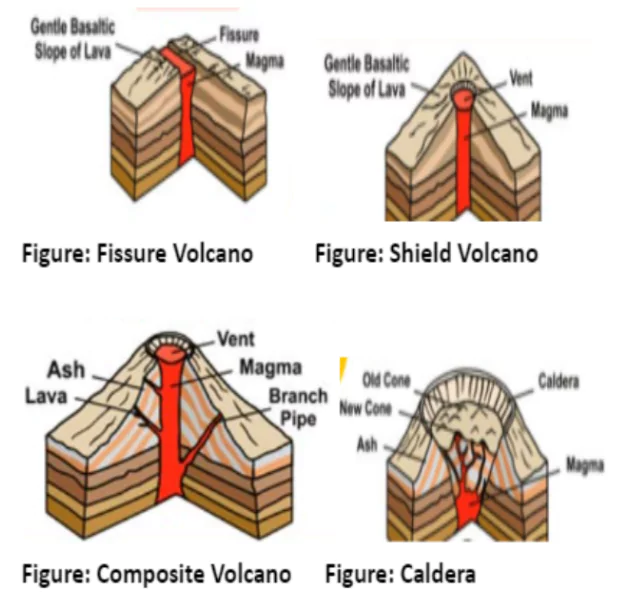![]() April 26, 2024
April 26, 2024
![]() 24
24
![]() 0
0
Volcanoes are categorized based on how often they erupt, their shape, and the type of eruption they produce. They can be active, dormant, or extinct. They also vary in shape, from gentle shield volcanoes like those in Hawaii to explosive composite volcanoes like Mount Fuji. Eruptions can range from smooth flows of lava, as seen in Icelandic eruptions, to explosions.
Volcanoes can be classified based on various factors, such as their Periodicity level, Viscosity, and Eruption types.

| Must Read | |
| Current Affairs | Editorial Analysis |
| Upsc Notes | Upsc Blogs |
| NCERT Notes | Free Main Answer Writing |
Volcanoes come in different types, like active, dormant, or extinct, and they vary in shape and eruption style. Some, like shield volcanoes, erupt gently, while others, like composite volcanoes, explode violently.
| Related Articles | |
| Volcanic Landforms: Geological Formation, Types, and Impact | INTERIOR OF THE EARTH: FROM CRUST TO CORE |
| Dramatic Warming in Pacific Ocean | India Japan Relations |
<div class="new-fform">
</div>

Latest Comments